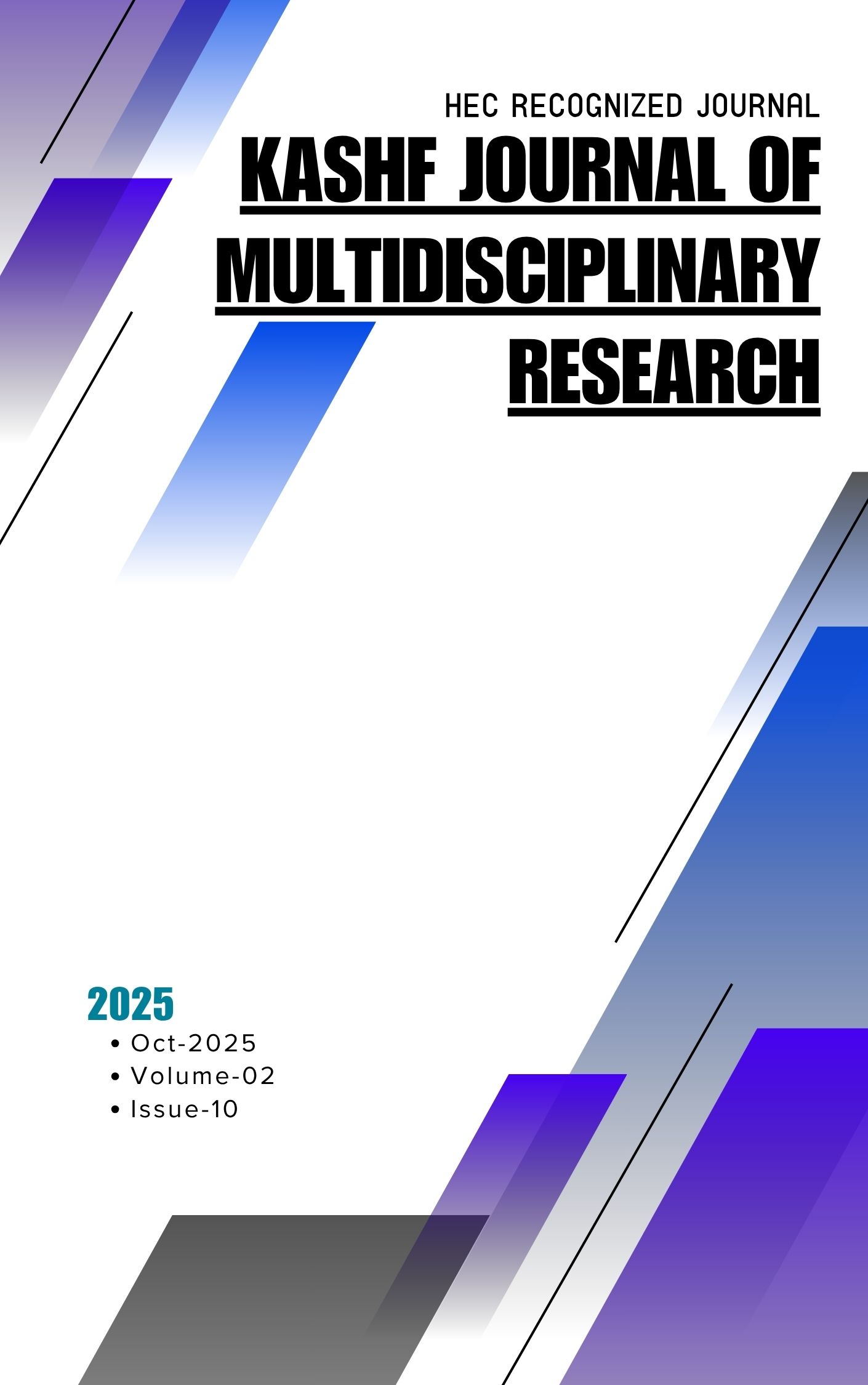GENOTYPE × ENVIRONMENTAL INTERACTION FOR SALT TOLERANCE IN ELITE GENOTYPES OF RICE (ORYZA SATIVA L.)
DOI:
https://doi.org/10.71146/kjmr640Keywords:
Rice, physiological parameters, Salinity, Stability analysis, ANOVA, CorrelationAbstract
The present study was conducted to evaluate the genetic performance of ten rice (Oryza sativa L.) genotypes under saline and non-saline conditions across three different locations. The experiment was laid out in a randomized complete block design (RCBD) with three replications, and data were recorded for various morphological and physiological traits. The analysis of variance (ANOVA) revealed significant differences (p≤0.01) among genotypes for most traits, indicating substantial genetic variation. However, sodium and potassium content exhibited non-significant differences across treatments. The mean performance results indicated that L8, L9, and L10 exhibited superior adaptability under non-saline conditions, producing the highest grain yield plant-1 and demonstrating strong vegetative growth. Conversely, under saline conditions, L5 and L8 showed greater resilience, maintaining stable yield and physiological performance despite salt stress. Some genotypes, such as L6 and L7, displayed moderate yield but maintained stable performance across environments, suggesting their potential for salinity tolerance. Stability analysis using the Eberhart & Russell model further confirmed the consistency of performance across varying environmental conditions. Genotypes L8 and L9 exhibited high stability across locations, while L5 and L8 emerged as promising candidates for saline-affected areas due to their ability to sustain yield under stress conditions. The findings of this research provide valuable insights into genotype selection for saline-affected regions. The identified high-performing genotypes L8 and L9 can be recommended for further breeding programs and potential commercial cultivation to enhance rice productivity in salt-stressed environments.
Downloads
Downloads
Published
License
Copyright (c) 2025 Jawad Ahmed Burdi, Manzoor Ali Magsi, Mehran Ali Chahwan, Qamaruddin Jogi, Shabana Naz Mazari, Muhammad Haroon Hullio (Author)

This work is licensed under a Creative Commons Attribution 4.0 International License.







